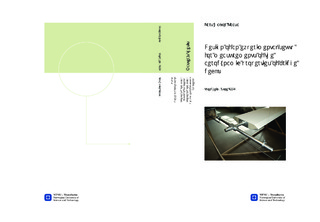| dc.contributor.advisor | Øiseth, Ole Andre | nb_NO |
| dc.contributor.advisor | Sigbjørnsson, Ragnar | nb_NO |
| dc.contributor.author | Kaasa, Lars Halvor | nb_NO |
| dc.date.accessioned | 2014-12-19T12:01:24Z | |
| dc.date.available | 2014-12-19T12:01:24Z | |
| dc.date.created | 2012-11-08 | nb_NO |
| dc.date.issued | 2012 | nb_NO |
| dc.identifier | 566286 | nb_NO |
| dc.identifier | ntnudaim:7369 | nb_NO |
| dc.identifier.uri | http://hdl.handle.net/11250/237085 | |
| dc.description.abstract | As modern bridge design continuously aims for longer and slender bridges, it is necessary to be able to determine aerodynamic properties of such structures with a highdegree of accuracy. The horizontal degree of freedom has traditionally been considered uninteresting, and aerodynamic properties have been determined by section model tests involving a vertical and a torsional degree of freedom only. However, for very long bridges, horizontal motion may prove to be important.This thesis has focused on an experimental setup based on the traditional suspension rig, but in addition to vertical and torsional motion, it also allows horizontal motion. A prototype intended for still air experiments has been designed, built and tested.Introducing a third degree of freedom renders the stiffness of the system non-linear with respect to motion of the section model. To better understand the model s behaviour in the rig, a FE-model and an analytical stiffness model have been developed.Two types of system identification methods were utilised to determine the dynamic properties of the prototype. The Covariance Block Hankel Matrix (CBHM) method have over the years been used to determine aerodynamic properties of several well-known bridges, e.g. the Hardanger Bridge, while Subspace State Space System Identification (N4SID) methods is a newer family of methods well known for their robustness, accuracy and ease to use.It turns out that the N4SID method used in this thesis produces far better damping estimates than the CBHM method.The proposed experimental setup seems promising for further research and development, although it has several drawbacks and limitations. | nb_NO |
| dc.language | eng | nb_NO |
| dc.publisher | Institutt for konstruksjonsteknikk | nb_NO |
| dc.subject | ntnudaim:7369 | no_NO |
| dc.subject | MTING ingeniørvitenskap og IKT | no_NO |
| dc.subject | Konstruksjonsteknikk | no_NO |
| dc.title | Design of an experimental setup for measurements of the aerodynamic properties of bridge decks | nb_NO |
| dc.type | Master thesis | nb_NO |
| dc.source.pagenumber | 151 | nb_NO |
| dc.contributor.department | Norges teknisk-naturvitenskapelige universitet, Fakultet for ingeniørvitenskap og teknologi, Institutt for konstruksjonsteknikk | nb_NO |

